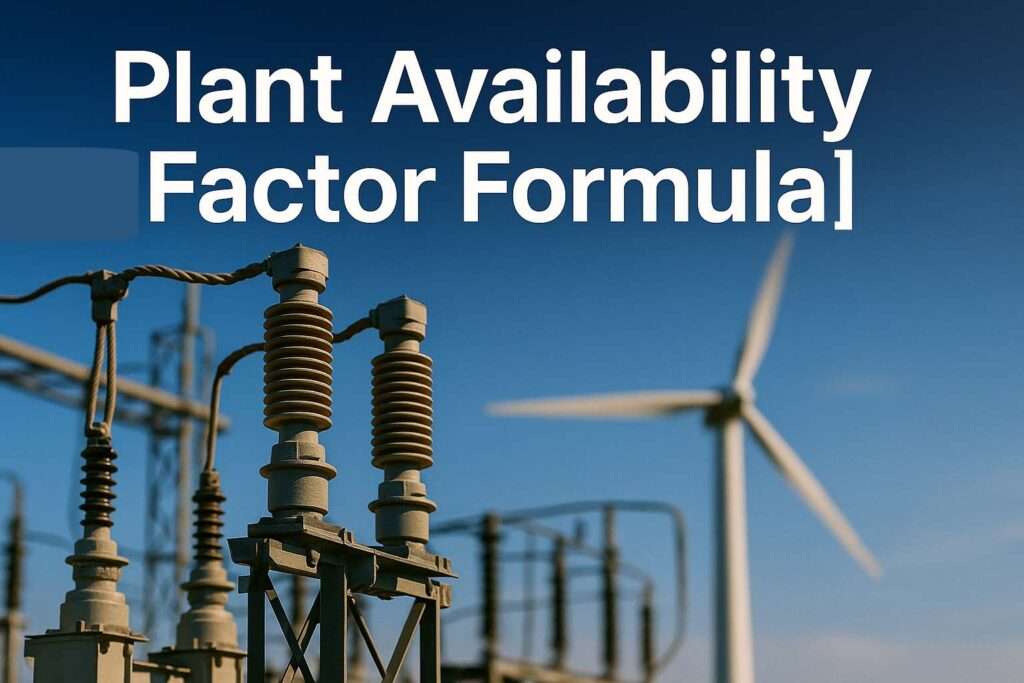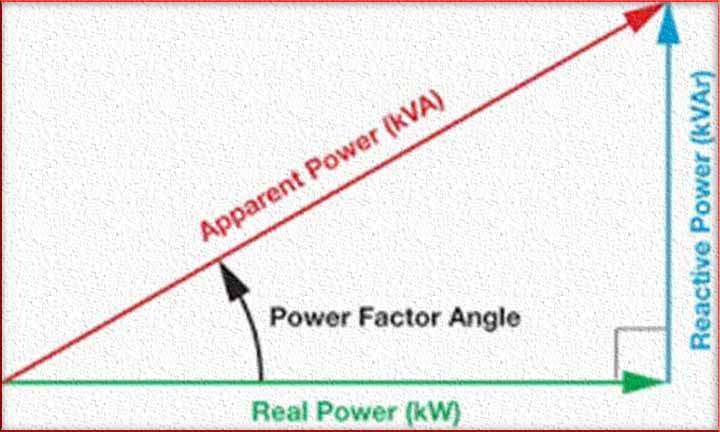Plant Availability Factor Formula: A Complete Guide
Understanding the plant availability factor formula is essential in power generation and energy system performance evaluation. This factor is crucial in assessing the operational readiness and reliability of power plants—be it thermal, nuclear, hydro, or renewable energy sources. With growing global demands for dependable electricity, knowing how to calculate and apply this metric can significantly enhance energy management strategies.

This article explains the plant availability factor formula in detail, including its components, calculation, practical implications, and how it compares with other related metrics. You’ll also find technical examples and comparisons with other performance indices like capacity factor and load factor.
What Is the Plant Availability Factor Formula?
The plant availability factor formula is:
Availability Factor (%) = (Available Time / Total Time) × 100
This simple formula expresses the ratio of the time a plant was available to operate to the total time in a given period (usually one year).
- Available Time: When the plant was ready to generate electricity.
- Total Time: The entire period being analyzed, including downtime and maintenance.
Even if a plant is available but not generating, it is still considered “available” under this metric.
Key Elements of the Plant Availability Factor Formula
Let’s break down each component to understand it better:
- Scheduled Maintenance Time: Planned downtime for regular checks and repairs.
- Forced Outage Time: Unplanned downtime due to faults or breakdowns.
- Operational Time: When the plant was actively generating electricity.
- Idle But Available: When the plant was ready but not dispatched due to low demand.
The formula does not factor in whether electricity was actually produced—only if the plant was ready to produce.
Example Calculation Using the Plant Availability Factor Formula
Let’s say a power plant operates over a year (8,760 hours). Here’s the breakdown:
| Parameter | Value (Hours) |
|---|---|
| Total Time | 8,760 |
| Scheduled Maintenance | 200 |
| Forced Outages | 100 |
| Available Time | 8,460 |
Availability Factor = (8,460 / 8,760) × 100 = 96.57%
This means the plant was ready to generate power for 96.57% of the year, showing high operational reliability.
Why Is Plant Availability Factor Important?
The plant availability factor formula helps in several ways:
- Operational Planning: Determines how reliable a plant is for grid supply.
- Economic Assessment: Availability directly affects profitability.
- Maintenance Optimization: Highlights excessive unplanned outages.
- Regulatory Compliance: Utilities often have availability targets to meet.
An availability factor closer to 100% indicates better reliability and maintenance practices.
Plant Availability Factor vs. Other Metrics
A common confusion arises between availability factor and other performance indices. Let’s clear that up.
Difference Between Capacity Factor and Load Factor
- Capacity Factor reflects actual energy output vs. maximum possible output.
- Load Factor shows the ratio between average load and peak load over a period.
In contrast, availability factor only focuses on the time a plant is ready to run, regardless of how much energy is actually produced.
These three factors offer different perspectives:
| Metric | Measures | Includes Downtime? |
|---|---|---|
| Availability Factor | Plant readiness | Yes |
| Capacity Factor | Energy produced vs. maximum possible | Yes |
| Load Factor | Average load vs. peak load | No |
So, while availability tells you if the plant could run, capacity and load factors tell you how well it actually did.
What Affects the Plant Availability Factor?
Several technical and operational factors impact availability:
- Age of Equipment: Older machines have more breakdowns.
- Maintenance Schedule: Frequent or inefficient maintenance lowers availability.
- Spare Parts Availability: Delays in repairs reduce readiness.
- Staff Competence: Skilled operators reduce forced outages.
Modern plants often achieve high availability by adopting predictive maintenance and digital monitoring.
Industry Benchmarks and Trends
Here are some typical values for various plant types:
| Power Plant Type | Typical Availability (%) |
|---|---|
| Nuclear | 85 – 95 |
| Coal | 80 – 90 |
| Gas Turbine (CCGT) | 90 – 95 |
| Hydro | 95 – 98 |
| Wind | 95 – 97 |
| Solar PV | 97 – 99 |
As you can see, renewable plants like solar and wind usually have high availability due to fewer moving parts and simpler maintenance needs. However, that doesn’t always translate to higher output due to weather dependency—highlighting the difference between availability factor and capacity factor.
Plant Availability Factor in Regulatory Frameworks
Utilities and grid operators often need to meet minimum availability thresholds. For example:
- In the U.S., NERC (North American Electric Reliability Corporation) requires reporting and tracking.
- In Europe, energy regulators may link incentives or penalties to availability metrics.
- In competitive markets, higher availability improves dispatch priority and profitability.
Knowing the plant availability factor formula allows operators to remain compliant and competitive.
How to Improve Plant Availability Factor
Here are some proven methods:
- Predictive Maintenance: Use data analytics to anticipate breakdowns.
- Redundancy Systems: Backup systems reduce forced outages.
- Training and SOPs: Skilled staff reduce human error.
- Asset Management Software: Centralized tracking of asset health improves decision-making.
Focusing on these areas ensures your plant is always ready to deliver when the grid calls for it.
Practical Insight: Availability Factor vs. What Is Plant Capacity Factor?
Understanding the difference between availability and what is plant capacity factor helps in comprehensive performance evaluations.
While the availability factor answers “Was the plant ready?”, the capacity factor answers “How much did the plant actually deliver compared to what it could have?”
A plant could have 98% availability but only 45% capacity factor if demand was low or fuel constraints limited production. Both metrics are vital but serve different purposes.
Software Tools for Calculating Availability Factor
Many asset management platforms offer built-in modules for calculating the plant availability factor formula. Examples include:
- GE APM (Asset Performance Management)
- IBM Maximo
- Siemens OMMS (Operation & Maintenance Monitoring System)
These tools track downtime, log maintenance, and calculate metrics in real time, allowing for proactive management and faster reporting.
Future of Availability Factor Monitoring
With the rise of IoT and smart grids, monitoring plant availability is becoming automated and more precise.
- Smart sensors detect anomalies early.
- Cloud-based platforms offer real-time dashboards.
- AI algorithms predict outages before they happen.
This transformation is making traditional, manual logging obsolete. In modern grids, availability data is now part of the broader energy management system.
Conclusion
The plant availability factor formula is a foundational tool for analyzing the reliability of any power generation facility. It tells you if the plant is prepared to meet demand and plays a key role in planning, regulation, and profitability.
By understanding the components, calculations, and implications of this factor, operators can make informed decisions to enhance reliability. This metric should be used alongside others like capacity factor and load factor for a complete view of plant performance.
As technologies evolve and grids become smarter, the importance of availability monitoring will only increase. Whether you’re managing a fossil fuel station or a renewable energy plant, mastering this metric is a must.
Follow Us on Social:
Subscribe our Newsletter on Electrical Insights for latest updates from Electrical Engineering Hub
#PlantAvailabilityFactor, #PowerPlantEfficiency, #EnergyEngineering, #AvailabilityFactorFormula, #PowerGeneration, #PlantPerformance, #ThermalPowerPlant, #EnergyMetrics, #PowerPlantOperations, #ElectricityGeneration, #AvailabilityFactor, #PlantLoadFactor, #EnergyAvailability, #OperationalEfficiency, #GridPerformance





